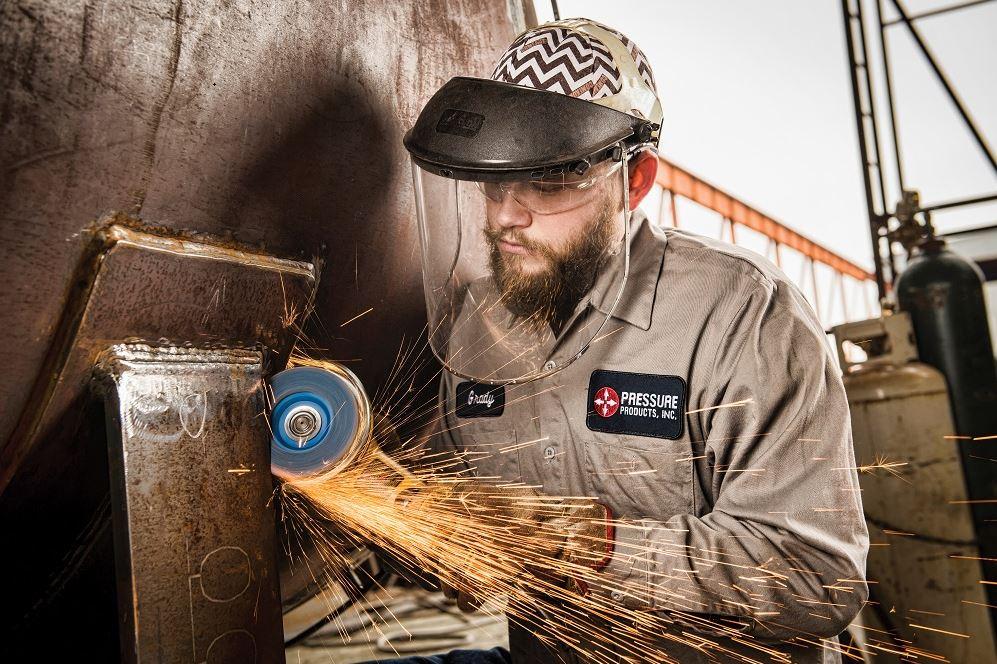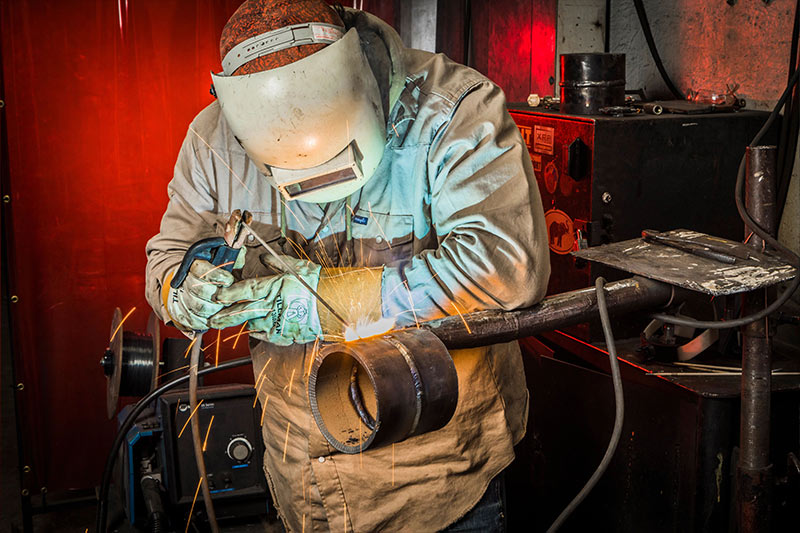Usual Welding Fixing Issues and Exactly How to Address Them Effectively
Welding repairs typically run into a series of issues that can jeopardize the integrity of the end product. Common issues consist of poor infiltration, porosity, and imbalance, to name a few. Each defect provides special obstacles that require particular methods for resolution. Recognizing these concerns is vital for welders intending to improve their end results and skills. This conversation will check out these typical welding fixing concerns and efficient techniques to address them.
Inadequate Infiltration
Insufficient infiltration takes place when the weld metal stops working to fully fuse with the base material, resulting in weak joints and possible architectural failures. This problem typically comes from not enough heat input, incorrect electrode angle, or improper welding speed. Welders might experience inadequate infiltration because of a miscalculation of the essential criteria for a specific material density or kind. Furthermore, contamination on the base product's surface can impede efficient bonding, worsening the problem. To resolve insufficient penetration, welders should ensure appropriate settings on their tools and keep a tidy job surface area. Regular assessment of welds is suggested to recognize any type of deficiencies early, allowing for prompt modifications and the avoidance of jeopardized structural integrity in bonded settings up.
Porosity
Porosity is a common flaw in welded joints that manifests as little gas bubbles entraped within the weld metal. This flaw can endanger the integrity of the weld, resulting in decreased toughness and prospective failing under anxiety. Montana Mobile Welding and Repair Fabrication. Porosity typically arises from contamination, wetness, or improper welding methods, which enable gases to leave into the molten weld swimming pool. To deal with porosity, welders must assure correct surface area prep work, preserve a tidy workplace, and use suitable welding parameters. Additionally, selecting the best filler material and shielding gas can reduce gas entrapment. Routine evaluation and testing of welds can aid recognize porosity early, ensuring timely restorative actions are taken, thus protecting the top quality and integrity of the bonded structure
Imbalance
Imbalance in welding can arise from different aspects, including incorrect setup and thermal growth. Comprehending the origin is vital for reliable resolution. Numerous modification strategies are readily available to straighten components and assure structural integrity.
Causes of Imbalance
Welding misalignment often originates from a variety of underlying issues that can endanger architectural honesty. One main cause is improper fit-up of elements prior to welding, which can bring about voids and irregular surfaces. Variations in thermal expansion during the welding process can also cause distortion, specifically if the materials being joined have various coefficients of expansion. Additionally, inadequate clamping and fixturing may stop working to hold parts safely in area, leading to movement during welding. Badly conserved tools, including welding devices and devices, might introduce incongruities in the weld grain, additional contributing to misalignment. Ultimately, operator error, stemming from insufficient training or experience, can likewise play a significant duty in creating misaligned welds.
Correction Techniques Offered
Resolving imbalance efficiently calls for a combination of restorative techniques tailored to the particular issues available. One typical technique is using jigs or fixtures to hold components in the proper position throughout welding, ensuring regular alignment. Furthermore, pre-heating the products can help lower distortion and enhance fit-up. For substantial misalignment, mechanical adjustment techniques, such as using hydraulic jacks or clamps, can be employed to deal with the placement prior to welding. Post-weld heat treatment might additionally be necessary to relieve stress and anxieties triggered by misalignment. Cautious evaluation and adjustment during the arrangement phase can avoid imbalance problems from coming to be substantial troubles, promoting a smoother welding procedure and enhancing overall architectural honesty.
Distortion
Distortion is a typical challenge in welding that can occur from various elements, including uneven heating & cooling. Recognizing the root causes of distortion is vital for carrying out efficient avoidance methods. Resolving this issue not only enhances structural stability however also enhances the general quality of the weld.
Reasons for Distortion
When subjected to the intense warm of welding, products typically go through modifications that can lead to distortion. This phenomenon mostly arises from thermal growth and contraction during the welding process. As the weld location warms up, the material increases; upon air conditioning, it acquires, which can develop interior tensions. On top of that, irregular heating throughout a work surface can aggravate these stress and anxieties, resulting in bending or bending. The kind of product also plays a significant duty; metals with differing thermal conductivity and coefficients of development might respond in different ways, leading to unforeseeable distortions. Moreover, poor joint layout and insufficient fixturing can add to misalignment throughout welding, enhancing the chance of distortion. Comprehending these reasons is necessary for effective welding repair service and prevention strategies.
Avoidance Techniques
Reliable prevention techniques for distortion throughout welding concentrate on regulating warmth input and making certain appropriate joint layout. Maintaining a regular warm input aids to lessen thermal growth and tightening, which can cause distortion. Using techniques look what i found such as pre-heating the workpiece can additionally reduce the temperature level gradient, advertising uniform heating. Furthermore, selecting ideal joint styles, such as T-joints or lap joints, can improve stability and minimize stress concentrations. Executing correct fixturing to protect the workpieces in position additionally aids in keeping placement during the welding process. Lastly, staggered welding series can distribute warm a lot more equally, avoiding local distortion. By using these techniques, welders can considerably reduce the chance of distortion and enhance the total quality of their welds.
Cracking
Fracturing is an usual concern come across in welding repair work, commonly resulting from various variables such as inappropriate cooling prices, material option, or inadequate joint preparation. The occurrence of fractures can substantially jeopardize the stability of the weld, bring about possible failures throughout operation. To resolve this problem, welders must first assess the origin, making sure that materials are compatible and suitably chosen for the specific application. Furthermore, controlling the air conditioning rate throughout the welding process is crucial; rapid air conditioning can generate stress and anxiety and lead to splitting. Appropriate joint style and preparation also add to lessening the risk. Executing these approaches can enhance weld quality and resilience, ultimately minimizing the probability of breaking in ended up weldments.

Incomplete Combination
A significant concern in welding repairs is incomplete combination, which happens when the weld steel does not properly bond with the base material or previous weld passes - Welding. This defect can cause weak points in the joint, potentially endangering the integrity of the welded framework. Aspects adding to incomplete blend consist of inadequate warm input, incorrect welding strategy, and contamination of the surface areas being signed up with. To resolve this issue successfully, welders ought to ensure appropriate pre-weld cleaning and surface prep work, in addition to change their welding criteria to achieve ample penetration and combination. Normal assessment during the welding procedure can also assist determine incomplete fusion early, permitting timely restorative procedures to boost the overall high quality of the weld
Overheating
While welding repair services can boost architectural honesty, overheating offers a significant obstacle that can lead to product destruction. Extreme warmth during welding can change the mechanical homes of metals, leading to reduced strength, raised brittleness, and bending. This sensation is particularly essential in high-stress applications where structural dependability is paramount. Determining getting too hot can entail aesthetic assessments for discoloration or distortion, as well as keeping track of temperature throughout the welding procedure. To alleviate the from this source threats linked with getting too hot, welders must utilize suitable methods, such as controlling warmth input, changing traveling rate, and using appropriate filler materials. Furthermore, implementing pre- and post-weld warm treatments can assist recover material homes and enhance the total top quality of the fixing, making certain lasting efficiency and security.
Regularly Asked Questions
What Are the Typical Indications of a Welding Problem?

How Can I Evaluate My Welds for High quality?
To examine welds for quality, one can utilize visual assessments, ultrasonic screening, and radiographic techniques. Each method guarantees structural stability, identifies issues, and confirms adherence to specified standards, eventually enhancing the dependability of the bonded joints.
What Safety Precautions Should I Take While Welding?
When welding, one should prioritize security by wearing ideal individual protective devices, making sure appropriate ventilation, securing combustible products away, preserving a clean work area, and recognizing surroundings to prevent crashes and injuries.
Can I Fix a Weld Without Redesigning the Entire Joint?
Repairing a weld without renovating the entire joint is possible, depending on the damages (Montana Mobile Welding and Repair Belgrade Fabrication). Strategies such as grinding, including filler material, or utilizing a welding process can successfully attend to particular defects while protecting the bordering structure
What Equipment Are Crucial for Efficient Welding Services?
Essential tools for effective welding repair services consist of a welding maker, cord brush, mill, protective equipment, clamps, and filler products. Each tool plays an essential function in ensuring top quality and safety and security throughout the repair work process. Porosity usually arises from contamination, wetness, or improper welding strategies, which allow gases to get away into the liquified weld swimming pool. Improperly conserved tools, consisting Web Site of welding equipments and tools, might present disparities in the weld grain, further adding to imbalance. When subjected to the intense warmth of welding, materials usually undertake changes that can lead to distortion. Splitting is a typical problem run into in welding repairs, commonly resulting from different elements such as inappropriate air conditioning prices, material selection, or inadequate joint preparation. A considerable concern in welding repairs is incomplete fusion, which occurs when the weld steel does not sufficiently bond with the base product or previous weld passes.